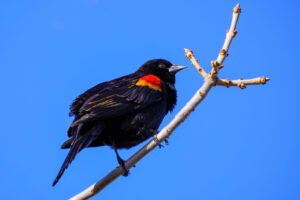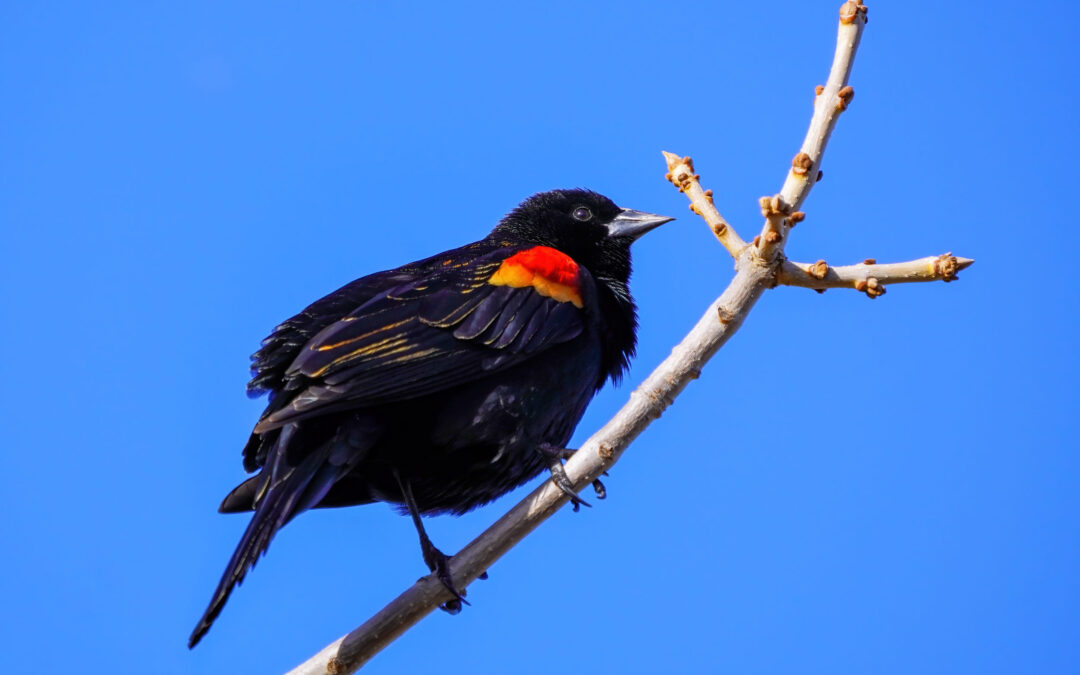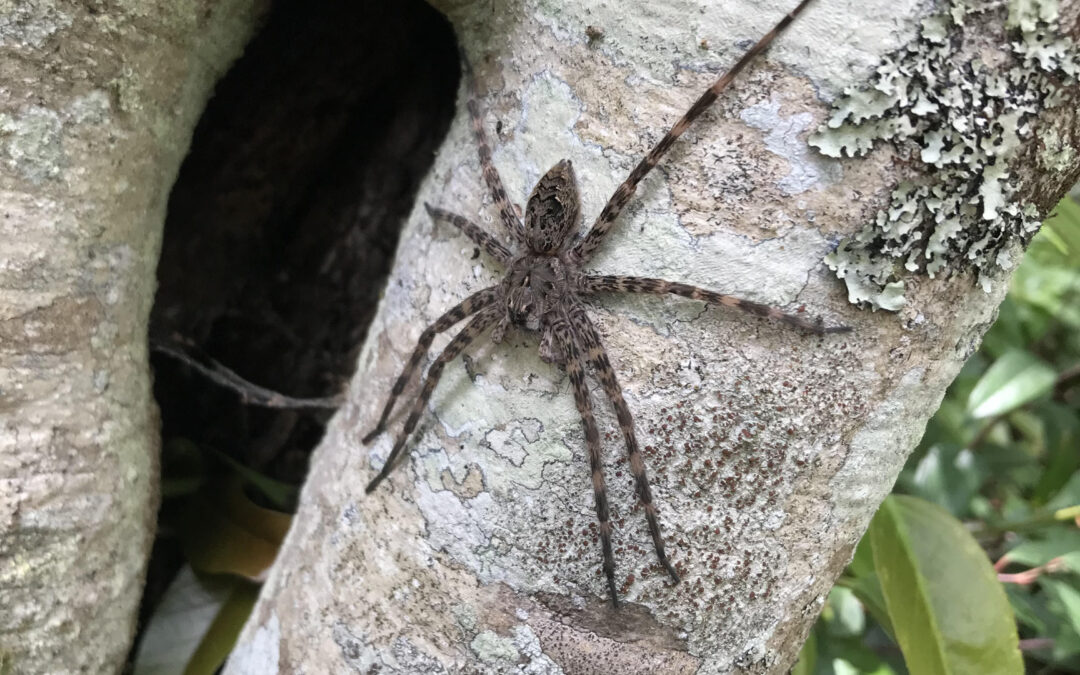
Red-winged blackbird (Agelaius phoeniceus) sitting in a tree.
Early Bird Special
March 8, 2021
The first day of spring is still a couple of weeks away. But anyone who enjoys birdwatching will tell you that spring is here because the millions of migratory birds that have spent the winter months in warmer places are on the move. Visitors to The Village Green can see for themselves. Robins are everywhere, scouting out trees and shrubs for building their nests. You can hear Northern Cardinals singing what sounds like “cheer, cheer, cheer.” Even year-round park residents like the titmice and chickadees join the happy chorus.
Red-Winged Blackbirds with their glossy black and red-and-yellow shoulder badges are unmistakable especially along the edges of the marshy wetlands along Frank Allen Road. Seeing this beautiful songbird is thought to be a positive omen of good things to come. Unfortunately, for the past few decades factors such as pesticides, habitat loss, and climate changes have resulted in a substantial decline in the red-winged blackbird population.
Places like The Village Green have become increasingly important in migratory bird conservation. Several years ago, in collaboration with the Highlands Plateau Audubon Society, the park installed nest boxes to attract cavity-nesting birds such as bluebirds, chickadees and Carolina wrens. Soon these small birds will claim these prized real estate locations.
The meadow lawns near the picnic Pavilion and the Hayes Fairchild Memorial Garden attract other early birds. Soon to be returning to The Village Green are the olive-green black Blue-headed Vireo, Wood Thrushes, and Grosbeaks. A wide variety of warblers travel through the area, stopping in the park on their long journey further north where they spend the breeding season. Many people highly anticipate the arrival of the ruby-throated hummingbird by early April.
When looking for birds in The Village Green, don’t miss some of the obvious places. Look high in the tree canopy, along the borders of the grassy areas, and in the eaves of the rustic structures throughout the park. Often the best way to find a bird is to hear it first. This makes early morning and evening the most desirable time to watch for birds in the park.
The wetlands boardwalk is a haven for waterfowl. Duck migration begins in March and continues into April. Wood ducks enjoy Cashiers Creek year-round. However, if you are walking in this area near dusk this time of year, you may be fortunate enough to catch a glimpse of a woodcock or hear their repeated, buzzy peent call.
The naturalist Rachel Carson observed, “There is symbolic as well as actual beauty in the migration of the birds, the ebb and flow of the tides, the folded bud ready for the spring. There is something infinitely healing in the repeated refrains of nature-the assurance that dawn comes after night, and springtime after the winter.” The Village Green is the perfect sanctuary for witnessing the rhythm of nature in the migration of a diversity of delightful birds. We work not only to attract our aviary friends but to make the park a hospitable home for area wildlife.
The Village Green provides a beautiful, free public park for the people. However, it is privately conserved by a nonprofit organization that depends on contributions to maintain the park and provide such an exceptional venue for the community. To learn more about The Village Green and how to explore its 13+ acres, or to make a donation, call 828-743-3434 or visit www.VillageGreenCashiersNC.com.
To learn more about the variety of bird species you can find in The Village Green, download our Guide to Birds here.




